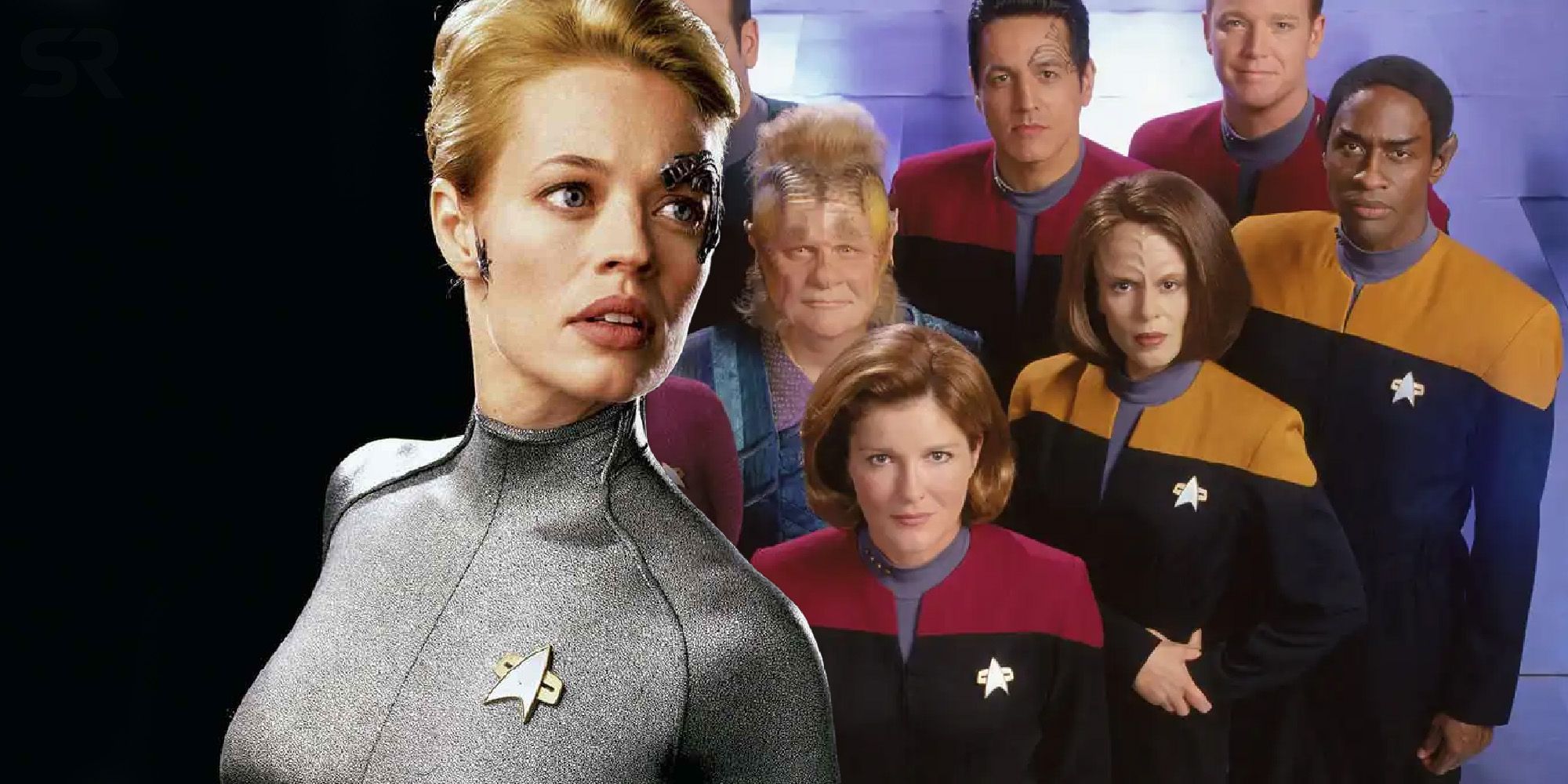In Star Trek: Voyager, Seven of Nine's catsuit creates a plot hole that is never completely explained on the show. Star Trek has an unspoken loophole in Starfleet uniform regulations, exempting some female crewmates from wearing the uniform in favor of a tight catsuit, but that doesn't fully elaborate on what happened with Jeri Ryan's character.
Seven of Nine is not Starfleet, but neither is most of Star Trek: Voyager's crew. When the Caretaker stranded the ship in the Delta Quadrant, Captain Janeway fully integrated the Maquis crew into their ship, including granting them provisional Starfleet commissions and uniforms. When Seven of Nine joined the crew, she almost never wore a uniform, even though she served in the same capacity as a science officer aboard Voyager. Janeway had already made the exception for the Maquis crew, so why did Seven of Nine not integrate in the same way?
The real reason for Seven's catsuit was increasing ratings, as Ryan was meant to add sex appeal to the show in tight molded and corseted outfits. The in-universe reason is never explicitly discussed on screen, but there is one: Seven of Nine's bodysuit helped regenerate her human skin after she spent most of her life in a Borg drone suit. Over the course of Voyager, though, Seven does wear clothes besides her catsuits and appears to have perfect skin whenever it's revealed. Aside from the purported medical reason for the outfit, civilians aboard Starfleet ships are able to choose their attire. Neelix and Kes were never granted any status in Starfleet, so they continued to wear their own clothes. But they were Delta Quadrant natives, not humans intending to return to Earth with Voyager like Seven of Nine. Janeway could have extended Seven the same provisional status in Starfleet, given that she was along for the 70-year ride.
Seven of Nine is not the only Starfleet crewmate to avoid the uniform. Troi in Star Trek: The Next Generation, Major Kira in Star Trek: Deep Space Nine, and T'Pol in Star Trek: Enterprise all wear different outfits. In T'Pol and Major Kira's cases, eschewing the uniform is used to show their separate allegiances. Major Kira is Bajoran militia, and T'Pol reports to the Vulcan High Command. In Troi's case, her outfit seemed to be a personal choice. When Captain Jellico ordered Troi to wear a uniform, it was because he expected formality on the bridge. This implied that Captain Picard allowed Troi to wear civilian clothes despite her Starfleet status, either for personal or cultural reasons. Following that episode, Troi continued to wear a Starfleet uniform. However, on Star Trek: Discovery, Michael Burnham was given a standard uniform to serve as a science specialist without rank or official status in Starfleet, so there is precedent for granting uniforms to civilian specialists.
Given Voyager's melting pot crew, Seven of Nine's lack of uniform leaves her on the outside for no clear reason. Her civilian clothes show that Seven never received a commission into Starfleet, a status she should have earned through her years of work on Voyager. It's possible that Seven of Nine simply chose to remain separate from Starfleet, as she was still adjusting to her humanity and her place among the crew by the series finale. She was trying to rediscover her individuality, and she may have remained outside of the command structure in pursuit of that goal. If any of these possible reasons for her catsuit were discussed on-screen, they could have added more character depth to a ratings-based decision.
Although Starfleet's uniforms are constantly changing throughout the franchise, the meaning remains the same. The uniform is a symbol within Star Trek, including Star Trek: Voyager, and Seven of Nine deserved a better explanation for being stripped of that symbol.


